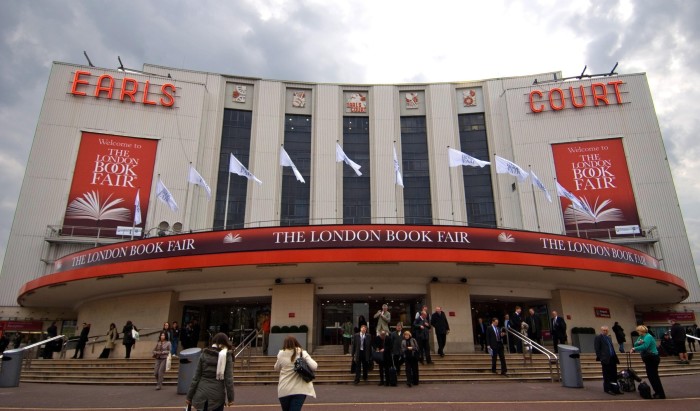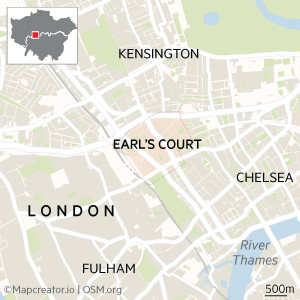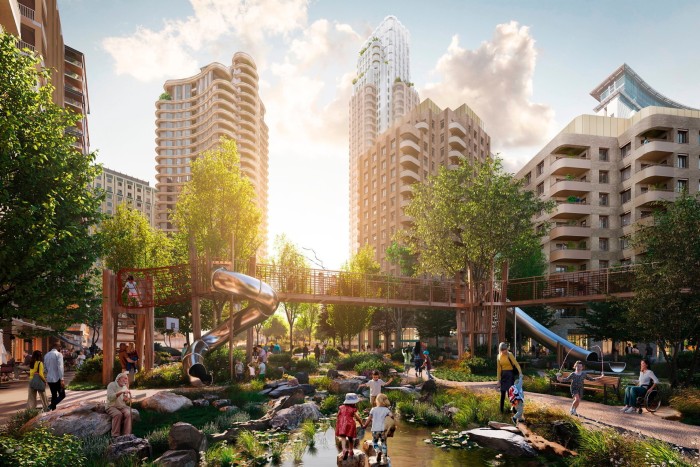
Stay informed with free updates
Simply sign up to the UK property myFT Digest — delivered directly to your inbox.
Earls Court will have two new skyscrapers by 2030 under plans submitted this week to develop central London’s largest empty site after nearly a decade of delays.
The Earls Court Development Company (ECDC) has formally submitted detailed plans for the first phase of development on the more than 40-acre site — including two towers of 42 and 26 storeys — as well as outline plans for later stages that will run into the 2040s.
The area has been largely disused since the demolition of the Earls Court Exhibition Centre in 2015. Previous plans for the site under former owner Capco were scrapped after disagreements with nearby residents and the local council.
“There can’t be any greater example of a project that needs to get going than this one,” said Rob Heasman, chief executive of ECDC, which is backed by developer Delancey, Dutch pension fund APG and Transport for London’s property arm.
The push to move forward with the site comes as the UK government has prioritised unlocking “stalled” developments as part of its ambitious agenda to build 1.5mn homes over five years. Urban “brownfield” sites such as Earls Court, which will ultimately have 4,000 new homes, will be critical to delivering on these targets.

The roughly £10bn project will also involve moving a TfL depot where some District Lines trains spend the night and specialist parts for the tube’s signalling systems are manufactured. Tube tunnels, which run almost at surface level into Earl’s Court station, will be incorporated into the design to avoid the engineering challenges of building on top of them.
The site has been repeatedly rumoured as a potential home for a new Chelsea Football Club stadium, but ECDC has ruled this out and it forms no part of the planning submission.
The official filing kicks off what is likely to be an involved consultation process leading up to a decision from local planning committees expected mid-2025 — with construction planned to start in late 2026.

ECDC has already spent four years developing the plans and consulting with locals, after Delancey and APG bought out Capco for £425mn in 2019. The new owners’ first move was to drop plans to include the redevelopment of an adjacent housing estate in the project, which had been the key source of tension with residents and the local council.
The current proposal reflects years of engagement with the local community, Heasman said, including dropping plans for one 34-storey skyscraper, reducing other building heights and increasing the amount of open space and parkland by a fifth. The site is next to a 36-storey office tower used by the Metropolitan Police.
The first phase includes a new “amphitheatre” style entrance from Earl’s Court station, parks, 1,500 homes and an office building. There will also be shops and restaurants, and the first of several planned cultural venues. ECDC said it is planning for 35 per cent of the housing to be affordable.
Heasman said the latest designs were “a real leap” from previous plans for the site. “Of course, there will be expensive homes. The expensive homes pay for all the social infrastructure. But it should be a place people feel they can come regardless of what is in your wallet.”
The Earl’s Court Society, a residents group, said it had “many concerns about the height [of buildings] and lack of parking . . . excessive strain on existing roads and amenities”, but declined to comment further before seeing the planning submission.


Barry Munday, an architect and chair of the Edwardes Square, Scarsdale, and Abingdon Association, a local conservation group, praised ECDC’s consultation efforts so far and said responses from locals “have been quite mixed”.
“There were people who live near the site who are obviously concerned about the height and density of the thing,” said Munday. “Others . . . are excited by it and see it as a big opportunity to uplift the Earls Court area.”
The application will be considered by both Hammersmith & Fulham council and the Royal Borough of Kensington and Chelsea because the site straddles the boundary between the boroughs. Munday predicted an intense planning debate. He said: “It is not going to sail through by any means.”